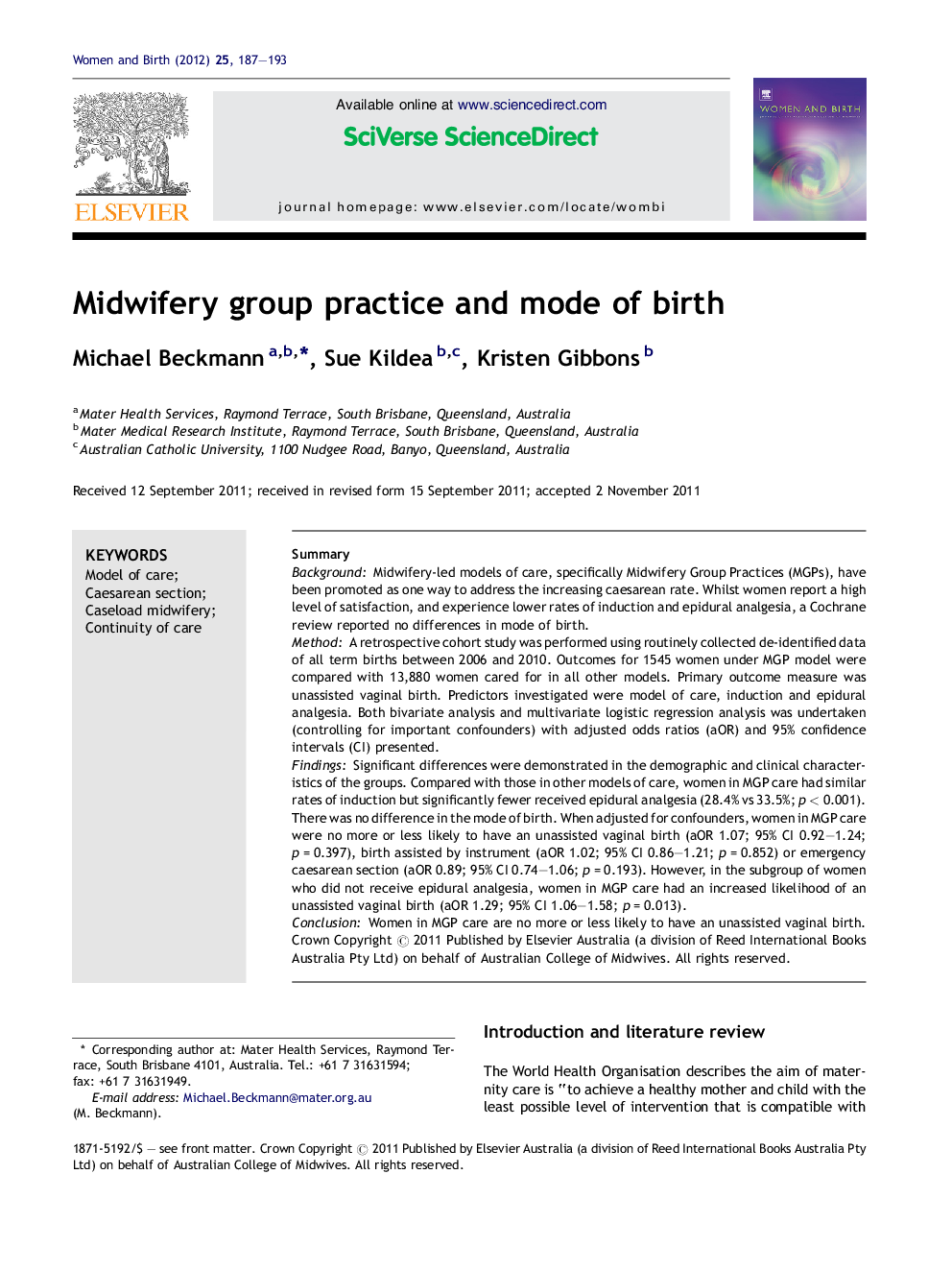| Article ID | Journal | Published Year | Pages | File Type |
|---|---|---|---|---|
| 2636679 | Women and Birth | 2012 | 7 Pages |
SummaryBackgroundMidwifery-led models of care, specifically Midwifery Group Practices (MGPs), have been promoted as one way to address the increasing caesarean rate. Whilst women report a high level of satisfaction, and experience lower rates of induction and epidural analgesia, a Cochrane review reported no differences in mode of birth.MethodA retrospective cohort study was performed using routinely collected de-identified data of all term births between 2006 and 2010. Outcomes for 1545 women under MGP model were compared with 13,880 women cared for in all other models. Primary outcome measure was unassisted vaginal birth. Predictors investigated were model of care, induction and epidural analgesia. Both bivariate analysis and multivariate logistic regression analysis was undertaken (controlling for important confounders) with adjusted odds ratios (aOR) and 95% confidence intervals (CI) presented.FindingsSignificant differences were demonstrated in the demographic and clinical characteristics of the groups. Compared with those in other models of care, women in MGP care had similar rates of induction but significantly fewer received epidural analgesia (28.4% vs 33.5%; p < 0.001). There was no difference in the mode of birth. When adjusted for confounders, women in MGP care were no more or less likely to have an unassisted vaginal birth (aOR 1.07; 95% CI 0.92–1.24; p = 0.397), birth assisted by instrument (aOR 1.02; 95% CI 0.86–1.21; p = 0.852) or emergency caesarean section (aOR 0.89; 95% CI 0.74–1.06; p = 0.193). However, in the subgroup of women who did not receive epidural analgesia, women in MGP care had an increased likelihood of an unassisted vaginal birth (aOR 1.29; 95% CI 1.06–1.58; p = 0.013).ConclusionWomen in MGP care are no more or less likely to have an unassisted vaginal birth.
